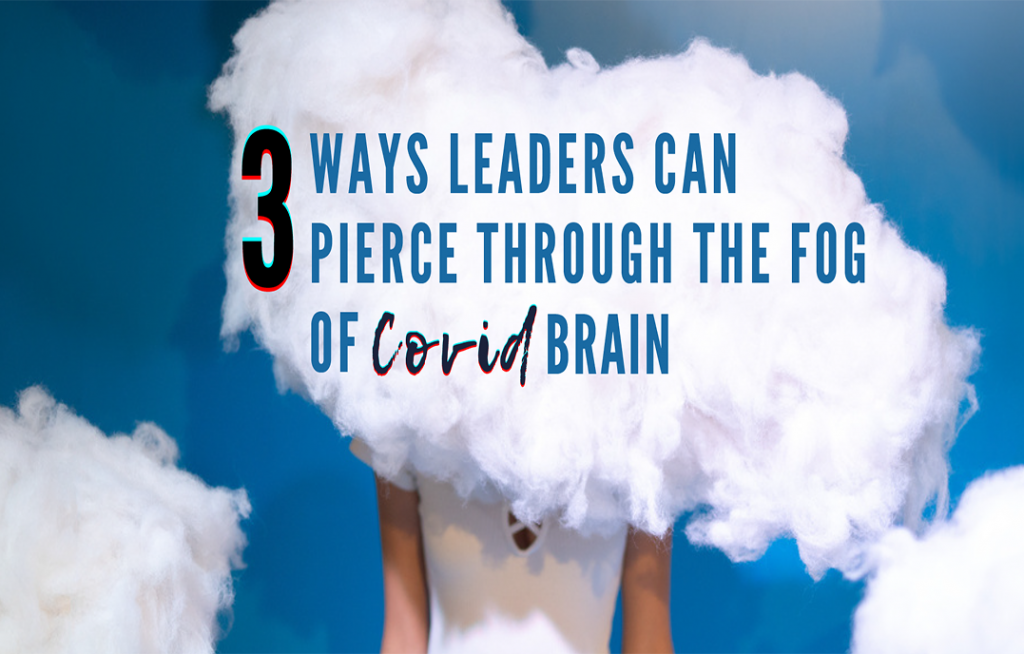We’ve done a great deal of work in the past five years on the intersection of neuroscience and leadership. It’s something that I’m particularly geeky about. With new technology like MRI scans, we can actually map connections between what today’s leaders navigate and the role the brain plays in supporting or thwarting our efforts. I’ve interviewed professors about the impact of power on the brain.I’ve lectured about how the brain gets hijacked when we’re under stress. I’ve delivered keynotes about how bias is built into our brain’s operating system. The brain takes up about 2% of the total mass of the body, yet it consumes about 20% of the body’s energy. The fact that one small part of our body consumes a disproportionately large amount of its total energy, is something that you’ll want to be aware of as you lead people through times of rapid change, wrapped in COVID.
First, consider this. We’re not the fastest species on Earth. We’re not venomous. Nor are we the largest or the strongest. Yet, our ability to adapt and survive on Earth has been nothing short of incredible. In the 5 million years since early hominids first emerged from east Africa’s Rift Valley, the Earth’s climate has grown increasingly erratic. Over cycles lasting hundreds of thousands of years, arid regions of central Africa were overrun by forests. Forests gave way to grasslands and contiguous landscapes were fractured by deep lakes.
It was within the context of this changing landscape that humans evolved their sizable brains and capacity for adaptive behavior. In such a world, the ability to think creatively, to imagine novel solutions to survival threats, proved to be a major asset. Today, the pace of change has been exponentially compounded by a global pandemic that has stress tested every country, every system, every set of policies, procedures, and processes that we thought we could rely on to navigate change as leaders. Leaders who understand how the speed of change is outpacing our brains’ ability to adapt will be those who steer their teams through the storm.
Let’s begin by looking at the things that the brain thrives on – efficiency, predictability, routines, hardwired habits, and processes. The brain learns the steps needed to complete routine tasks and takes an executive function role to help us get through those tasks without having to work out each step. That frees space for us to think about things completely different than what our bodies are doing, and keeps us from exhausting ourselves by mid-morning. When our routines get disrupted, the brain loses its ability to operate on autopilot. Instead, it senses the stress of disruption and either freezes or stews in a fog of uncertainty.
If you stack the knowledge that the brain consumers 1/5 of the body’s energy and freezes or fogs up in the face of uncertainty, you need a way to pierce through the fog to guide your team back into a productive state and respond to the changes brought about by COVID. Here are three ways leaders can help their teams pierce through the fog of COVID brain:
1. Reintroduce predictability. Even as you continue to deal with the damage caused by the sudden diaspora of your team from a centralized location to individual locations, your team still need regular communication. Silence breeds fear. Even if you have nothing concrete to share, make and keep a regular time to communicate with your team. The predictability of knowing that they’ll hear from you at regular intervals will help negate anxiety and fear.
2. Take control of what you can control. In a crisis, people need to feel like soldiers, not victims. Let your team know what the major challenges will be to navigate change, then put them to work to help solve those challenges. Behavioral Economics tells us that the more time people invest in the hard work of meeting a challenge, the more they will focus on the positive attributes than the negative. This is commonly known as the IKEA effect.
3. Give your team a collective sense of purpose. Fire up your team around the grand vision that needs to be mobilized on a grand scale. People don’t want to be thought of as coin-operated employees. They want to be a part of something bigger than themselves. Share the grand vision with them and help them see how they can contribute to the whole.
Question: What have you done to pierce through the fog of COVID as a leader?
Driven by the premise that excellence is the result of aligning people, purpose and performance, Center for Executive Excellence facilitates training in leading self, leading teams and leading organizations. To learn more, subscribe to receive CEE News!




